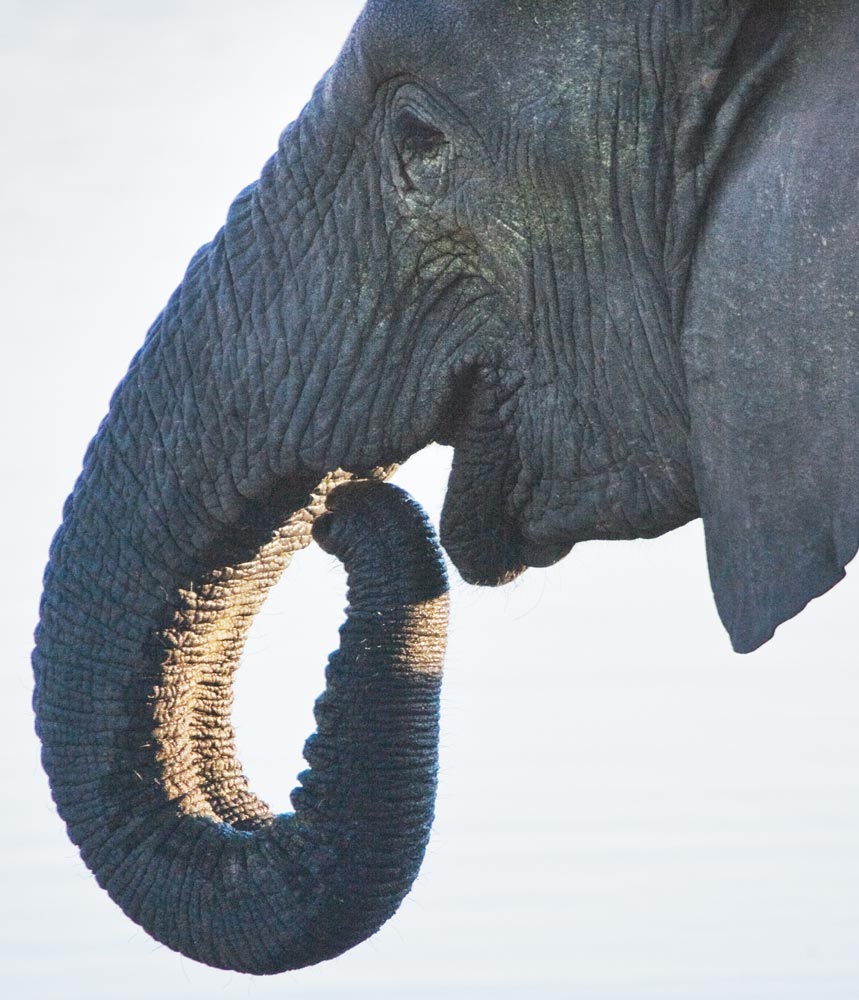Elephant Speak
What the 2004 tsunami can tell us about animal communications
A Lifelong Learner from UVA Magazine on Vimeo.
On the day after Christmas 2004, two massive tectonic plates gave way deep beneath the Indian Ocean off the west coast of Sumatra, Indonesia. The catastrophic adjustment was so powerful that it made the entire planet vibrate; the great Sumatra-Andaman earthquake was the second largest earthquake ever recorded.

The earthquake occurred nearly 20 miles beneath the seabed. The horrific destruction that occurred was the result of towering waves, some estimated to have been 100 feet high, that inundated coastlines. Indonesia, Sri Lanka, India and Thailand were the hardest hit. Nearly a quarter million people perished, but surprisingly few animals were killed.
Even more curious, not one elephant was reported lost, even though many were in danger zones.
Michael Garstang, an emeritus research professor of environmental sciences at UVA, is on the hunt to find out why. His theory, as yet unproven, is that the elephants somehow detected the onrushing tidal waves and reacted accordingly.
“One of the reports I read tells about some elephants in Thailand that give rides to tourists,” says Garstang. “They had just come back from a ride and were secured to stakes in the ground. Before the tsunami hit, some of the elephants pulled the stakes out of the ground, and in a few cases actually broke the chains.
“In Sri Lanka, there were reports of elephants crying. That must have been a distress call of some kind. There’s a lot of anecdotal information, but no hard scientific data. I’m trying to put that together and offer a theory as to what the elephants actually sensed.”
Much of Garstang’s long professional career has been as a meteorologist studying the global effects that the sun, oceans, wind and atmospheric conditions have on the planet and the life forms that populate it. His fascination with such things dates from his childhood; he grew up in the small village of Utrecht on the northern plains of KwaZulu- Natal, South Africa.
“My father was an engineer at a high-grade coal mine near the village where I grew up,” Garstang says. “I’d often go exploring and hunting with my dog and Zulu friend. I remember looking far out across the plains and seeing moving dust clouds or the purple haze of an escarpment far off in the distance. I think it was that whole experience of growing up in the wild and open spaces that led me to become a meteorologist working with the atmosphere.”
His expertise as a meteorologist, combined with his curiosity about the natural world, has led him down less-traveled avenues of inquiry, such as how weather and sound are linked. Add in a fondness for elephants and it is not surprising that he is a pioneer in an unexplored field: the effect of the atmosphere on elephant communications.

It was while working on a large NASA project in the early 1990s involving the Amazon Basin that Garstang found his way back to his old stomping grounds in southern Africa. He and a small team were in Namibia, where they proved that a percentage of the Amazon Basin’s nutrients arrives in dust from the Kalahari Desert, thousands of miles away. The National Science Foundation, which funded the research, gave Garstang permission to piggyback his other work with elephant communications while he was there.
The professor had first heard about the subject in the late 1980s. Katy Payne, an acoustic biologist at Cornell University, discovered that humpback whales communicate with one another by using ever-changing songs they compose. In 1984, her focus moved to elephants after spending a few days with some at the Portland Zoo in Oregon.
While near the elephants, Payne felt a vibration in her stomach similar to the sensation she felt when she had been in a church choir and was close to the organ when it was being played. Her research concluded that elephants use infrasound—a low-frequency rumble below 20 hertz and the range of human hearing—to communicate with one another across vast distances.
After reading Payne’s research, Garstang realized that the atmosphere from the ground up to about 14 feet would have a lot to do with how far their vocalizations travel. The more he looked into it, the more fascinated he became.
“The contribution Mike made that I consider very important is linking the field of meteorology with the field of animal communications,” says Payne, reached at her home in New York. “Also in pointing out that meteorological conditions really impact the distances over which animals are in touch with each other. That was huge.”
The work Garstang is doing on the tsunami phenomenon could prove just as groundbreaking. But determining if and how elephants can somehow detect impending danger presents a daunting challenge.
“The extreme view of scientists is that if you can’t prove it, it doesn’t exist,” says Garstang. “I take the view that, if it exists, I’m going to try to prove it. Owners of cats, dogs and other domesticated animals know they react to geophysical phenomena. We had a dog that would go hide in the bathroom long before we could hear the approach of a thunderstorm.
“I don’t think we’re crediting animals for the amount of intelligence or sense that they have. The elephant in particular has a big brain, even in comparison to its size, and the memory portion of its brain is large. Elephants also have the capability of assimilating multiple sources of information, drawing a conclusion and then carrying out an action that allows them to survive.”
Garstang recently sent out for peer review his first research paper on the subject, “Precursor Tsunami Signals Detected by Elephants.” In the paper he cites the Feb. 4, 1975, earthquake that destroyed 90 percent of the city of Haicheng, China.
More than a month before the quake struck, unusual movements were observed in ground water levels and land elevations. But the most unsettling sight in the city was the bizarre animal behavior. Rats and snakes were seen wandering around as if dazed, or lying motionless on roads and sidewalks. As the date of the 7.3-magnitude earthquake neared, cattle and horses became agitated for no apparent reason.
Then rats started to move erratically as though intoxicated, and chickens stopped going into their coops. About six hours before the quake struck, officials made the decision to evacuate the city.
The action saved an estimated 90,000 lives. It was the first time an earthquake was accurately predicted, but there are many more cases in which animals have not reacted at all.
Nonetheless, Garstang theorizes that elephants utilize their acute hearing, smell and other senses to enhance their chances of survival in dangerous situations.
“What I think the elephants in Thailand were reacting to was the sound of the actual waves striking the cost of Sumatra from a long ways away,” Garstang says. “They heard that unusual sound of the long-transmitted breaking wave. At the same time, they heard a strange local sound of the water receding along the coastline about 20 minutes before the tsunami struck. They would also detect the strange smell of the exposed seabed, which is normally under water.
“I think they put all this together, realized it was bad news, reacted to it and got out of the way.”
Garstang’s firsthand study of elephant behavior has made him realize that their uncanny survival abilities are still far beyond human understanding. As one example, he cited their mysterious ability to detect buried land mines left over from the war between Angola and South Africa that ended in 1989.
“They don’t know how many land mines were buried all over the place during that war,” Garstang says. “In the beginning, there were elephants that were lost. They had trunks blown off, feet blown off; they were killed. But since then, elephants have developed the capability—one really doesn’t know how—to avoid these mines. This is true to the extent that some of the local people are digging up mines and putting them around their fields as a deterrent to the elephants.
“That tells us that these elephants know what a land mine is, and if it’s moved to another location, they know the danger is still there.”
An incident that was front-page news in South African newspapers makes Garstang suspect that elephants have a range of feelings and emotions we have yet to comprehend. The remarkable event occurred in a game preserve in KwaZulu-Natal, where he grew up.
“There’s a beautiful animal called a nyala that is relatively rare,” Garstang says of the deerlike creature. “A capture team had been rounding up nyalas for a week on a private reserve and were holding them in a large enclosure with a big gate. On the final night before they were to load the animals up and transport them to another location, they realized a herd of elephants was around their camp. They thought the elephants were probably after the alfalfa they had been feeding the nyalas.
“But the female matriarch of the herd came in and with her trunk unlatched the gate, opened it, stood aside and let all these nyalas out. The whole lot. Now, why? I’m reasoning they were able to pick up the distress calls of these nyalas, and they went to their aid. It would have been purely altruistic, because this was a different species. They even had something to lose, because they eat some of the same food. I think it was done because these animals have emotions. And they react to emotions, and they even react to the emotions of others.”
Garstang is financing his tsunami elephant study with personal funds. What motivates him is his curiosity and love for animals, especially elephants. His drive and discipline have led to fascinating interdisciplinary explorations, colleagues say.

“Even in semiretirement, he is gaining renewed international recognition,” says UVA environmental sciences professor Robert Simpson, a founding director of the National Hurricane Research Project and a former director of the National Hurricane Center. “In my more than six decades of varied exploration in meteorology and other sciences, I can recall few if any acquaintances, much less close friends, with the breadth of interests and diversity of exposures, as well as understanding of both the natural and physical sciences, as Mike.”
Garstang, who is 78, gives no indication that his curiosity is waning. “I was at a lecture this morning on a bird they call a skimmer. It got me thinking about how it searches for food. Does it search randomly? They’ll make a low pass over the water, and then they’ll fly back over the same area.
“I’m thinking the first pass is to create bubbles that attract fish, and the second pass is to get the fish. When I’m finished with this tsunami project, I’d like to look into that.”